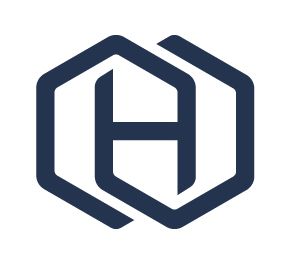What Repairs Are HOAs Responsible For? HOA Repairs 101
What Repairs Are HOAs Responsible For?
Homeowners Associations (HOAs) play a crucial role in maintaining the overall quality, appearance, and safety of residential communities. However, understanding which repairs fall under the HOA’s responsibility and which ones are the individual homeowner’s obligation can sometimes be confusing. HOAs are generally responsible for maintaining and repairing common areas, shared facilities, and community assets, while homeowners typically handle the maintenance of their individual units.
To help clarify these responsibilities, this guide explores the types of repairs that HOAs are commonly required to manage and how these responsibilities are determined by the association's governing documents, such as the Covenants, Conditions, and Restrictions (CC&Rs).
1. Common Areas and Shared Amenities
One of the primary responsibilities of an HOA is to maintain common areas and shared amenities that all residents have access to. These areas typically include:
- Swimming pools
- Clubhouses
- Fitness centers
- Parks and playgrounds
- Community gardens
- Shared parking lots and driveways
Because these areas are used by all residents, the HOA is responsible for their upkeep, including repairs and ongoing maintenance. For example, if a community swimming pool has a pump failure or the park’s playground equipment needs repairs, the HOA will arrange for and cover the costs of these repairs. The funds for these repairs typically come from HOA dues or reserve funds set aside for such projects.
Maintaining these shared amenities is essential for preserving the aesthetic appeal and functionality of the community, which in turn helps retain property values and ensures a high quality of life for residents.
2. Building Exteriors and Structural Components
In many HOAs, particularly in condominium and townhome communities, the association is responsible for maintaining the building exteriors and other structural components. This can include:
- Roof repairs or replacements
- Siding and exterior wall maintenance
- Foundation repairs
- Gutter cleaning and repairs
- Shared balconies, decks, or patios
- Shared stairwells, hallways, or entrances
For example, if the roof of a condominium building needs repair due to age or storm damage, the HOA would typically be responsible for arranging and paying for the repairs. These types of exterior repairs are often covered because they affect the overall integrity and safety of the building, and neglecting them could lead to more costly damage in the future.
That said, HOAs will often distinguish between "limited common areas" (areas shared by some but not all residents, such as a private balcony) and "general common areas" (used by all residents). Depending on the association’s specific rules, homeowners may be responsible for maintaining certain limited common areas, even though they are not part of their individual units.
3. Landscaping and Grounds Maintenance
HOAs are often responsible for landscaping and maintaining the general appearance of the community’s outdoor areas. This includes tasks like:
- Mowing lawns
- Trimming trees and shrubs
- Maintaining community gardens or green spaces
- Repairing irrigation systems
- Cleaning and maintaining decorative elements such as fountains
In some communities, this responsibility may extend to individual front yards, especially in townhome or patio home communities, where homeowners share connected landscaping. Maintaining the aesthetics of the outdoor areas helps ensure that the community remains visually appealing and can positively impact property values. The HOA’s landscaping responsibilities are usually detailed in the community’s governing documents, and homeowners pay for these services through their HOA fees.
4. Shared Utilities and Systems
In multifamily dwellings like condominiums or townhomes, many essential systems—such as plumbing, electrical wiring, and HVAC systems—are shared between units. The HOA is often responsible for the maintenance and repair of shared systems, particularly when an issue affects multiple units or common areas. This can include:
- Plumbing systems (such as main sewer or water lines serving multiple units)
- Electrical systems (such as shared lighting in hallways or outdoor common areas)
- Heating, ventilation, and air conditioning (HVAC) (in cases where HVAC systems are centralized and shared)
For instance, if a major plumbing issue arises in a condominium building that impacts several units, such as a blockage in the main sewer line, the HOA would typically handle the repair. However, if the issue originates within a homeowner’s unit, such as a clogged sink, the homeowner would be responsible for the repair costs.
5. Roads, Sidewalks, and Parking Lots
In communities where the roads, sidewalks, and parking lots are shared by all residents, the HOA is typically responsible for maintaining these areas. This includes tasks like:
- Paving repairs or resurfacing
- Crack sealing
- Snow removal
- Street lighting maintenance
- Cleaning and painting parking spaces
Proper maintenance of these areas is essential for both safety and accessibility within the community. For example, if a private road within the community develops large potholes, the HOA would be responsible for repairing the road to ensure safe passage for residents and visitors. Neglecting such repairs could lead to safety hazards or even legal liability for the HOA.
6. Safety and Security Systems
Many HOAs also take on the responsibility of maintaining community safety and security systems. This can include:
- Gated entry systems
- Security cameras
- Fire alarms and extinguishers (in common areas)
- Smoke detectors (in shared hallways or lobbies)
Ensuring these systems are functional and up to date is essential for the safety and security of the residents. For instance, the HOA may be required to inspect and maintain fire safety equipment in communal areas of a condominium building. In some cases, the HOA may also be responsible for upgrading security features as needed to ensure that the community remains safe and secure.
7. Pest Control and Environmental Hazards
In many HOAs, especially in larger communities, the association may be responsible for handling pest control and mitigating environmental hazards. This can include services such as:
- Rodent and insect control in shared spaces
- Termite inspections and treatments (particularly in attached townhomes or condos)
- Mold remediation in common areas or building exteriors
The HOA is generally responsible for ensuring that pests or hazards in common areas or shared walls are dealt with promptly. If the infestation is limited to an individual unit, however, the homeowner may be responsible for taking action.
8. Repairs Due to Negligence or Damage
While HOAs are responsible for many repairs, there are situations where homeowners may be held financially responsible for damage, particularly when it is due to negligence or accidental damage caused by the homeowner. For example:
- If a homeowner causes a fire that damages both their unit and common areas, the homeowner may be required to pay for repairs to the common areas.
- If a leak from a homeowner’s plumbing system causes damage to adjacent units or shared walls, the homeowner may be held liable for the repair costs.
In these cases, the HOA will typically outline the process for handling such repairs and the associated costs in the community’s governing documents.
Conclusion
Understanding what repairs HOAs are responsible for can help avoid confusion and ensure that both the association and homeowners fulfill their obligations. HOAs are generally responsible for maintaining common areas, shared amenities, building exteriors, and communal systems, while individual homeowners are tasked with maintaining the interior of their units. However, the exact division of responsibilities can vary based on the association’s specific rules, so reviewing the governing documents is essential.
For homeowners, staying informed about their responsibilities and the HOA’s can prevent disputes and ensure that the community remains a well-maintained and enjoyable place to live.
Get the Latest in Real Estate & Property Management!
I consent to receiving news, emails, and related marketing communications. I have read and agree with the privacy policy.





